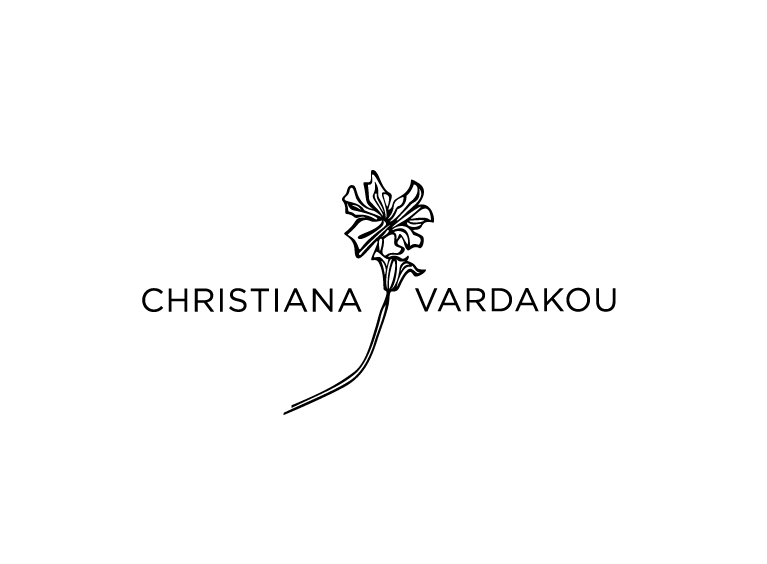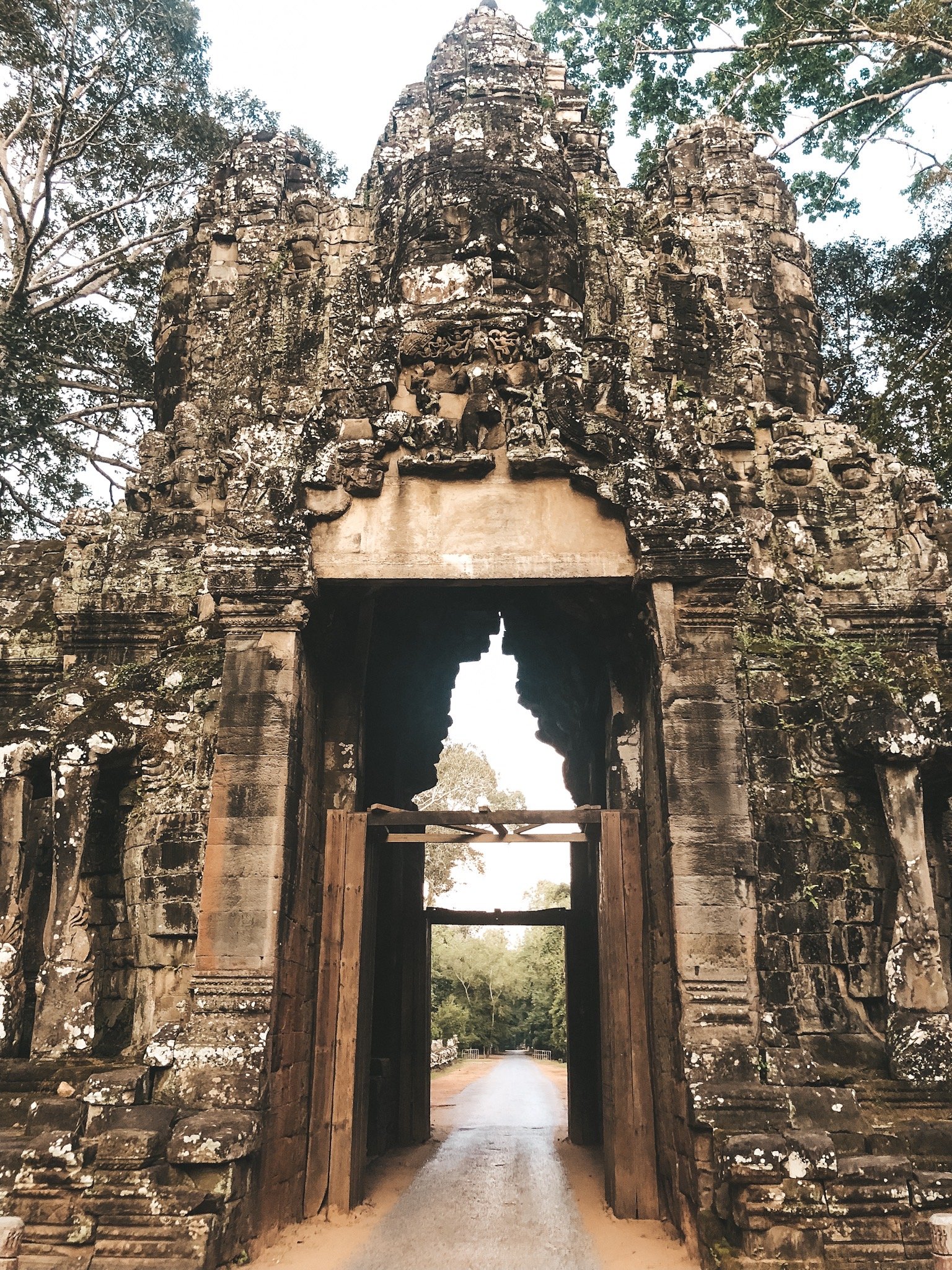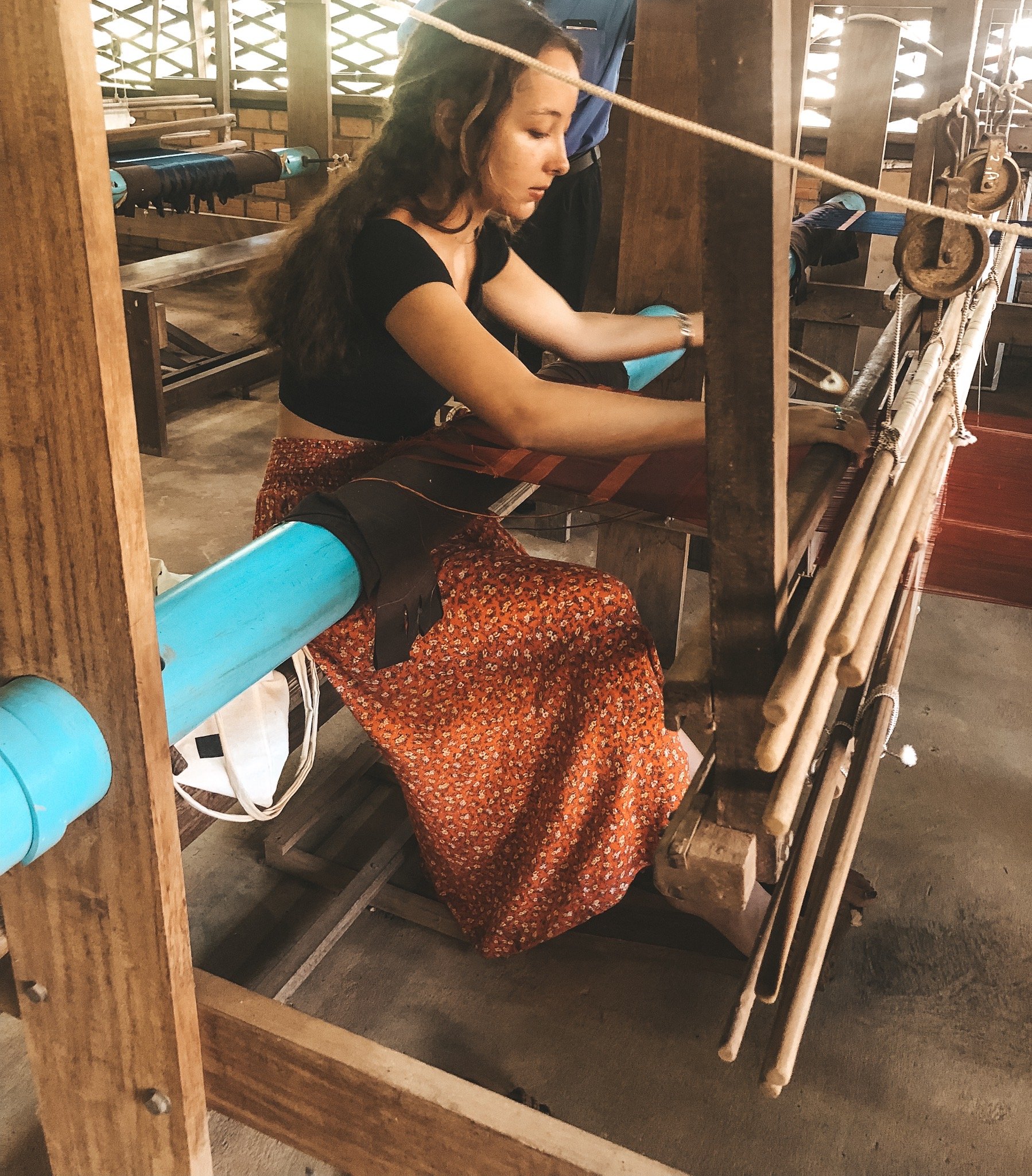Cambodia Week Four: Siem Reap
Last year when I started planning my trip I was thinking of only going to Thailand, Laos and Vietnam. However, this changed — I ended up going to seven countries instead of just three.
When my friend told me he was going to join me for the first month in Asia he said he really wanted to go to Cambodia. We decided to go for a few days and I am really glad we did. I wish I had stayed for a longer time and travelled to more places instead of only going to Siem Reap, but I am sure I will visit Cambodia again in the future.
I’d heard mixed things about Cambodia, people told me it’s dangerous while other people told me that it’s the opposite. I actually never felt uncomfortable or unsafe while I was there. People were helpful, kind and friendly.
On the flight from Bangkok to Siem Reap, I met Tann - a lovely girl around my age that is from Siem Reap but lives and studies in Phnom Penh. She was doing an internship at the children’s hospital in Siem Reap for a few weeks and that is why she was there. We talked on the plane and exchanged phone numbers and actually met my second day in Siem Reap. She came to my hotel, gave me a ride on her scooter, showed me temples, took me to secret spots, we saw the sunset and we also went for dinner. She was lovely and definitely one of the nicest people I met on this trip. She talked to me a lot about the country and it’s people, about traditions and the way of life.
Here are some photos from that afternoon:
When we decided to go to Cambodia I tried to find some textile workshops or a class. I came across Artisans Angkor. In 1992 it was a vocational school providing training to young Cambodian people (18-25 years old) living in rural villages of the Siem Reap Province. In the beginning, training was focused on the building sector. Later this changed — the focus was on the Arts and Crafts sector, in order to revive the Khmer cultural heritage while helping rural people find work near their home village. In 1998, ‘Artisans Angkor’ was founded as a workplace for young people trained in handicrafts by the vocational school.
Since it’s creation at the end of the 90s, Artisans Angkor has provided professional skills to communities with limited educational opportunities and has offered good working conditions and social advantages to it’s employees. It provided employment to over 1100 people, with more than 800 of them being artisans. While visiting you can see all these different crafts: silk weaving, stone and wood carving, lacquerware, silver and copper plating as well as silk painting. In 2003, with support of the French Agency for Development, Artisans Angkor became an autonomous and semi-public Cambodian company. The profits of the company are reinvested in the new training programs or construction of new workplaces in the Siem Reap province.
Here are some photos from the different workshops:
Their website looked really professional and reading online about them, I really wanted to go visit and see all this in person. I also read that I could do two textile workshops, traditional weaving and silk painting. So I booked both of these while I was in Thailand. No one got back to me with a confirmation, and I had to send a lot of emails before someone did. Unfortunately, the workshops were very disappointing. They were both only three hours long, with no lunch or even water provided… And they cost 50 US dollars each. Comparing to the weaving workshops I did in Thailand before coming here, and all the other workshops I did after Cambodia —definitely, not worth it.
The first day, I did the weaving workshop. They took me to their silk farm, which was nice because you could see the whole silk process. When we got to the dyeing area, I was disappointed… They had a huge board talking about natural dyes and showing examples of the plants, and then they told me I will do some dyeing — and the dye was chemical. They don’t do any natural dyeing anymore. Which I understand, and that’s fine — however, when they do the tours, if someone doesn’t know about textiles and sees the board and doesn’t ask they don’t know that they use chemical dyes… They don’t make it clear, and I think they are trying to show that they use natural dyes even though they don’t. When I visited the shop (which is huge) there wasn’t any naturally dyed fabric. Everything was dyed with chemical dyes. Which is a shame, because if you are reviving traditional techniques then you definitely should revive that one since it’s so much better for us (wearers) and the environment. The workshop was basically a tour of the silk farm — with almost no weaving. When we got to the looms, I was shown how to weave (plain weave), which I knew, and they didn’t let me weave for more than half an hour. I was very disappointed, but I guess I should have asked for more details before booking and paying for the course.
Here are some photos from the weaving workshop and silk farm:
The next day I had the silk painting workshop. I was quite disappointed with that as well. I expected to be painting with dyes on a free piece of silk, however I was basically painting on a piece of silk which was on a frame like a canvas. They gave me three traditional patterns to choose from (elephants, a bird or a lotus), I chose the lotus. I was painting with acrylic paint inside the lines, that were already there (like a colouring book!). I felt like I was back in nursery. I don’t even have a photo of what I did, I really didn’t like it… Oh well - it taught me a lesson, never book anything without reading exactly what it is, how long it takes and reviews!
As you can probably see, I had mixed feelings about this place… I’d say it’s very touristy, tons of people visit everyday, and I felt like it’s more of an attraction rather than a place to go learn authentic techniques and crafts.
The next day I visited an amazing place that I found by chance! It is called IKTT (Institute for Khmer Traditional Textiles). I was walking down a street when suddenly I saw women of all ages weaving, spinning, tying (for ikat) and winding yarn. I immediately walked in and a very nice lady came up to me and told me the story of the institute. She was Japanese, and had moved to Siem Reap because of her fascination with Cambodian silk weaving. She introduced me to all the women and explained the ikat technique, she let me spin and wind some silk and talked to me about dyeing.
The IKKT specialises in the revival of the Cambodian Silk Ikat. In 1996 bu Kikuo Morimoto founded this institute. He was Japanese, and in 1995 he took a trip to Cambodia and was really sad to see that only a few old women in villages knew how to weave. He really wanted the skills to pass onto the next generation. As she explained to me, in 1995 the silk production situation was bad. Weaving was still happening in rural villages however the quality was poor. People were using synthetic fibers and chemical dyes after WW2. Apparently in the few places where women were still weaving, people (with a higher status) would exploit them, by giving them a very poor pay. It was getting to the point where it was no longer beneficial for the family to pass down the skills and therefore many weavers stopped weaving. Morimoto, started producing silk in order to start the revival process. Once there was silk, it was possible to start giving opportunities to skilled weavers by setting up workshops for the young weavers of villages.
In 2002, Morimoto took the institute to the next level. He started ‘Project Wisdom’. He bought a 5 hectare plot which is 15km north of Bayon at the centre of Angkor Thom. He started recreating a ‘traditional’ forest with all the plants required to breed silk and dye beautiful natural colour. The farm/forest in the outskirts of Siem Reap that you can visit (unfortunately, I couldn’t because I didn’t have enough time) where you can see all the natural dye plants as well as the silk farm. They use almond leaves, indigo, banana leaves, bougainvillea leaves, coconut bark, lychee wood and sticklac to dye their silk before weaving with it — reproducing traditional textiles.
It’s a really fantastic place, with wonderful people and amazing textiles. The founder Kikuo Morimoto passed away last year, but his work lives on. He was a great man, with a lot of knowledge about textiles and sustainability, with great ideas about the connecting the past with the future. If you’d like to read more about him you can here. I really recommend visiting this place. I was the only tourist there and they explained everything to me in great detail. They also offer indigo and shibori workshops at their forest. To book you have to go to the shop first and book for the following day. Even though I wanted to go to the forest/farm, I didn’t have enough time and I also had already done quite a lot of shibori so I chose not to prioritise this workshop. However, if I go to Cambodia again I would definitely visit them again. Here are some photos:
The lady that showed me around IKTT told me about a museum I did not know about. The MGC Asian Traditional Textiles Museum. It contains textiles from Cambodia, India, Laos, Myanmar, Thailand and Vietnam. The museum gives an overview of textile patterns and adaptation of the Mekong and the Ganga region. Raw materials are displayed as well as the process of spinning, winding, dyeing, weaving and embroidering. The museum is quite big but again I was the only one there. The lady at the entrance came with me, talking to me about the different textiles of each country, answering questions I had and explaining things that were not translated. Unfortunately, I wasn’t allowed to take any photos inside. However, it was nice to see textiles from India as well, since it’s the only country I knew I wouldn’t visit in this trip (yes it’s on my list - I’m hopefully going in 2019). I really recommend visiting this museum if you are in Siem Reap - except for textiles you also learn a lot about Buddhism, the history of the different countries as well as myths and legends. One of the things I didn’t know and really liked was that according to the Cambodian Royal Protocol, each day of the week corresponds to a colour.
Red for Sunday
Orange for Monday
Purple for Tuesday
Mustard - Green for Wednesday
Green for Thursday
Blue for Friday
Burgundy for Sunday
During royal ceremonies, people from the Royal family and their guests were all required to wear clothes (Sampot and Chorebap) of the ‘colour of the day’.
Except from these places some other recommendations (Siem Reap Centre) I have are:
Angkor National Museum - Museum about the Khmer history
Blue Pumpkin - Cafe at Artisans Angkor (snacks and lunch)
Cuisine Wat Damnak - Traditional Khmer food
Gelato lab - Best ice cream!
Malis Restaurant Siem Reap - Traditional Khmer food
Mekong Quilts - Beautiful textiles
Night Market Pub Street - Food and food and more food
Vibe Cafe - Vegan, great atmosphere, amazing food
We spent the next few days closer to the Angkor Wat ruins. We treated ourselves and stayed in an amazing hotel: Anjali by Syphon, that we loved. The food there was amazing, and there is also a pool and a spa! The hotel arranged a tuk tuk to take us around all the different temples in a day and we really recommend you do the same. The driver will take you to all the temples he recommends as well as temples you want to see, he will wait for you, will offer you water and even umbrellas for the sun. It gets really hot during the day — so start early.
Most of all we liked the Bayon, a state temple of Jayabarman VII. There are 54 Gothic towers decorated with 216 smiling faces. It is known as the ‘face temple’ and was mesmerising. Angkor Wat was of course amazing as well, its really big, there are many spaces to see and explore. I would really recommend you go everywhere, wait in line to go up some stairs, try and go to all the separate rooms and in general just explore. We only had one day to explore the temples but I think the 3 day pass is worth it and probably better as well since it gets so hot during the day and doing everything at one go is very difficult. Ta Prohm was another favourite, also called the ‘Tomb Raider Temple’ because of the Lara Croft movie featuring Angelina Jolie. Crumbling towers, ruins, and trees, roots and moss everywhere. It’s one of the most atmospheric places I saw in Asia. It feels untouched, and like nature and the jungle is taking over the temple. We also really liked Preah Khan.
Here are some photos:
I loved everything about Cambodia. It’s nature, it’s really bad roads, it’s food, it’s people and as always the textiles and temples. I really want to explore more parts of Cambodia and here is what’s on my list:
Phnom Penh - there is a silk island called Koh Dach in the city, museums, pagodas
Southern Islands - Koh Rong etc. (AMAZING beaches)
Kratie - dolphins at the Mekong, nature, peace and quiet
Kampot - seaside towns, countryside, trekking, caves
Mondulkiri - trekking, nature, waterfalls, elephants
Hope you enjoyed reading about my short trip to Cambodia and that you all had an amazing Christmas! Next week will be about my (really short) trip to Malaysia.
Lots of love,
Christiana







































